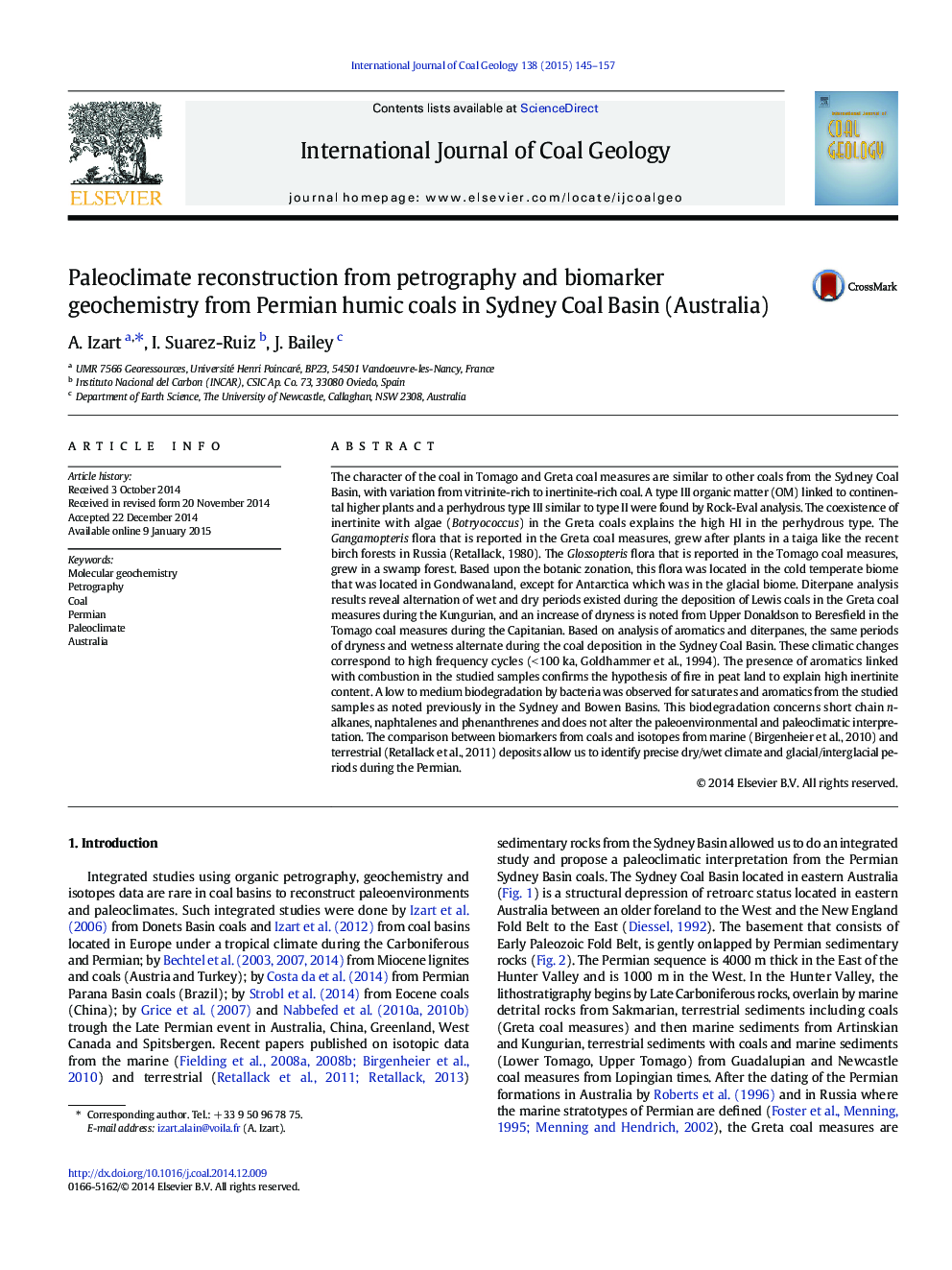| کد مقاله | کد نشریه | سال انتشار | مقاله انگلیسی | نسخه تمام متن |
|---|---|---|---|---|
| 1752985 | 1522560 | 2015 | 13 صفحه PDF | دانلود رایگان |
• Petrography and organic geochemistry study of Permian coals from the Sydney Coal Basin
• The petrography and geochemistry allowed us to propose a paleoclimatic interpretation.
• We compared our data with isotopic data to confirm our interpretation.
The character of the coal in Tomago and Greta coal measures are similar to other coals from the Sydney Coal Basin, with variation from vitrinite-rich to inertinite-rich coal. A type III organic matter (OM) linked to continental higher plants and a perhydrous type III similar to type II were found by Rock-Eval analysis. The coexistence of inertinite with algae (Botryococcus) in the Greta coals explains the high HI in the perhydrous type. The Gangamopteris flora that is reported in the Greta coal measures, grew after plants in a taiga like the recent birch forests in Russia (Retallack, 1980). The Glossopteris flora that is reported in the Tomago coal measures, grew in a swamp forest. Based upon the botanic zonation, this flora was located in the cold temperate biome that was located in Gondwanaland, except for Antarctica which was in the glacial biome. Diterpane analysis results reveal alternation of wet and dry periods existed during the deposition of Lewis coals in the Greta coal measures during the Kungurian, and an increase of dryness is noted from Upper Donaldson to Beresfield in the Tomago coal measures during the Capitanian. Based on analysis of aromatics and diterpanes, the same periods of dryness and wetness alternate during the coal deposition in the Sydney Coal Basin. These climatic changes correspond to high frequency cycles (< 100 ka, Goldhammer et al., 1994). The presence of aromatics linked with combustion in the studied samples confirms the hypothesis of fire in peat land to explain high inertinite content. A low to medium biodegradation by bacteria was observed for saturates and aromatics from the studied samples as noted previously in the Sydney and Bowen Basins. This biodegradation concerns short chain n-alkanes, naphtalenes and phenanthrenes and does not alter the paleoenvironmental and paleoclimatic interpretation. The comparison between biomarkers from coals and isotopes from marine (Birgenheier et al., 2010) and terrestrial (Retallack et al., 2011) deposits allow us to identify precise dry/wet climate and glacial/interglacial periods during the Permian.
Journal: International Journal of Coal Geology - Volume 138, 15 January 2015, Pages 145–157
